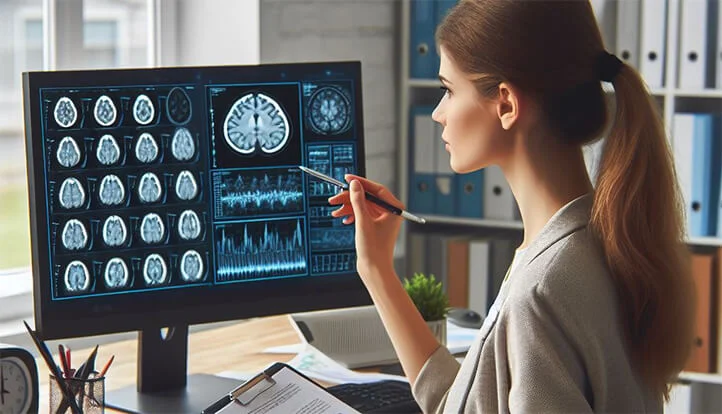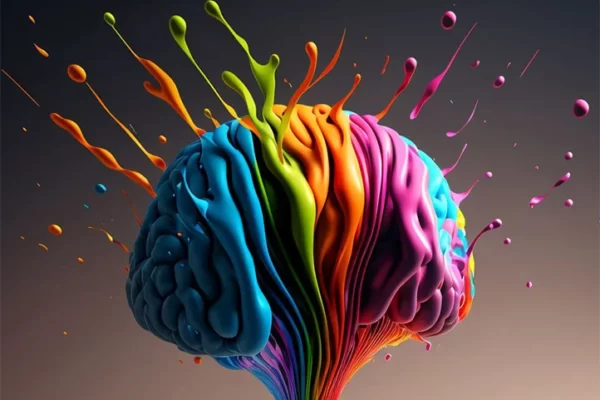Neuropsychology is a scientific field that studies the connection between the structure, functions of the brain, and behavior, cognitive processes, emotions, and other manifestations of human mental activity. It is an interdisciplinary science that combines knowledge from neurobiology, psychology, linguistics, medicine, and related disciplines.
Neuropsychology investigates how different areas of the brain are related to specific mental functions, such as memory, attention, perception, speech, emotions, decision-making, and behavioral regulation. Its primary goal is to understand the normal and pathological functioning of the brain and its influence on cognitive processes, emotions, and behavior.
The origins of neuropsychology date back to the 19th century when the first cases of patients with localized brain damage and associated mental function impairments were described. One key event was the description of aphasia (speech disorder) in a patient with damage to a specific brain area, made by Paul Broca in 1861.
Since then, neuropsychology has developed significantly due to new research methods, such as neuroimaging, electrophysiology, and neuropsychological testing. Important milestones include discoveries in the field of functional specialization of different brain areas, the identification of neural networks underlying higher cognitive functions, and the study of neuroplasticity.
Neuropsychology plays a crucial role in understanding the relationship between the brain and human behavior. It helps uncover the neurobiological mechanisms underlying cognitive, emotional, and behavioral processes.
The results of neuropsychological research have practical implications for diagnosing and treating neurological and mental disorders, developing neurorehabilitation methods, education, and legal practice. Additionally, neuropsychology contributes to the development of neuroscience and artificial intelligence, helping to better understand the principles of brain function.
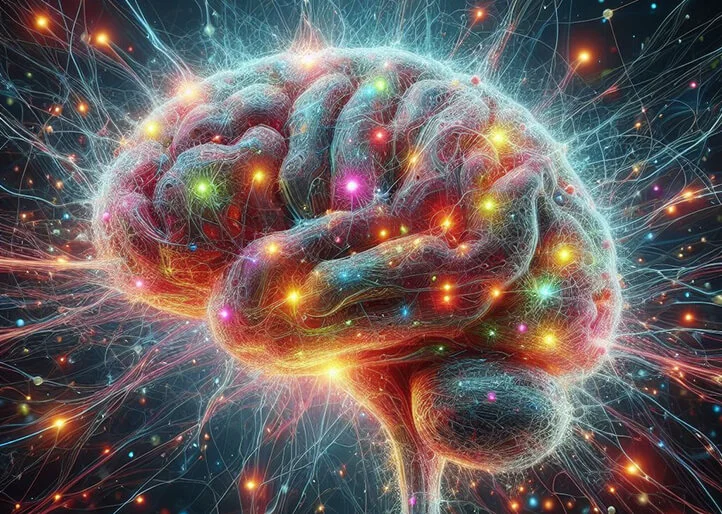
Main Areas of Research in Neuropsychology
The scope of neuropsychology is vast, as it explores the connection between the biological substrate — the brain, and the wide range of mental processes characteristic of humans. Cognitive functions, emotions, behavior, personality — all these are subjects of neuropsychological research.
The fundamental principle of neuropsychology is the principle of the localization of higher mental functions in the brain. That is, various cognitive abilities, behavioral patterns, and emotional reactions depend on the functioning of specific areas and systems of the brain. Damage to these cerebral structures inevitably leads to impairments in corresponding mental processes.
Given the complexity and multi-component nature of human mental activity, neuropsychology identifies key areas for detailed study. These include cognitive functions, the emotional sphere, behavioral regulation, as well as various neuropsychological syndromes arising from localized brain damage.
Cognitive Functions
Cognitive, or mental functions, have traditionally been a key focus of neuropsychologists. These refer to the higher mental processes underlying the perception, processing, and storage of information, decision-making, and the execution of goal-directed behavior. They include memory, attention, language abilities, visuospatial functions, executive functions, and others.
Memory
- Research into different types of memory (short-term, long-term, episodic, semantic, etc.) and their neurobiological correlates.
- Study of the processes of encoding, consolidation, and retrieval of information from memory.
- Investigation of memory impairments in various diseases (amnesia, Alzheimer’s disease, etc.) and their relation to damage in specific brain structures, such as the hippocampus, medial temporal lobe, etc.
Attention
- Study of the mechanisms of selective, divided, and sustained attention and their connection to the activity of specific brain areas, such as the frontal lobes, parietal cortex, etc.
- Investigation of attention disorders in conditions like attention-deficit/hyperactivity disorder (ADHD), traumatic brain injuries, etc.
- Study of the interaction of attention with other cognitive processes, such as memory, perception, and executive functions.
Perception
- Research into visual, auditory, tactile, and other types of perception processes and the neural networks involved.
- Investigation of perception disorders (agnosias) in cases of damage to occipital, parietal, and temporal brain areas.
- Study of the interaction of perception with other cognitive processes, such as memory, attention, and executive functions.
Speech
- Study of the neurobiological foundations of speech, language comprehension, reading, and writing.
- Research into various types of aphasias (speech disorders) and their relation to damage in specific brain areas, such as Broca’s area, Wernicke’s area, etc.
- Study of the development of language abilities in children and their neurobiological correlates.
Executive Functions
- Research into higher cognitive processes, such as planning, decision-making, cognitive flexibility, working memory, and their connection to the prefrontal cortex.
- Study of executive function disorders in various conditions, such as traumatic brain injuries, neurodegenerative diseases, schizophrenia, etc.
- Investigation of the role of executive functions in regulating behavior and emotions.
Emotions and Behavioral Regulation
- Study of the neurobiological mechanisms of emotions (fear, anger, joy, etc.) and the role of structures in the limbic system (amygdala, hippocampus, etc.) in their regulation.
- Investigation of emotional regulation disorders in mental health conditions, such as depression, anxiety disorders, personality disorders, etc.
- Study of the relationship between emotions, cognitive processes, and behavior.
Neuropsychological Syndromes
Aphasia
A speech function disorder caused by damage to specific areas of the brain responsible for speech. There are different types of aphasias, such as:
- Motor (expressive) aphasia – impairment of the ability to speak due to damage in the frontal area of the brain (Broca’s area).
- Sensory (receptive) aphasia – impairment of speech comprehension due to damage in the temporal area of the brain (Wernicke’s area).
- Anomic aphasia – difficulty in finding words.
- Global aphasia – severe impairment of all speech functions.
Agnosia
A disorder of the ability to recognize and interpret sensory information (visual, auditory, tactile) while maintaining sensory function. Different types of agnosia include:
- Visual agnosia – inability to recognize visual objects.
- Auditory agnosia – impairment in recognizing sounds.
- Tactile agnosia – impairment in recognizing objects by touch.
- Autotopagnosia – inability to recognize parts of one’s own body.
Apraxia
A disorder of the ability to perform purposeful motor actions in the absence of motor or comprehension impairments. Types of apraxias include:
- Ideomotor apraxia – impairment in performing symbolic gestures (waving goodbye, making a fist, etc.).
- Ideational apraxia – impairment in planning and executing a sequence of actions (e.g., making tea).
- Constructional apraxia – impairment in copying drawings or building three-dimensional constructions.
Other Syndromes
- Disorders of attention, memory, executive functions, and other cognitive processes associated with damage to specific brain areas.
- Disorders of spatial perception and orientation (e.g., damage to the parietal cortex).
- Impairments in the patient’s awareness of their own condition (anosognosia) in certain brain injuries.
Neuroplasticity and Recovery After Brain Damage
- Study of the brain’s ability to reorganize and compensate for functions after trauma, strokes, tumors, or other injuries.
- Investigation of factors influencing neuroplasticity, such as age, the nature of the injury, rehabilitation intensity, etc.
- Study of the mechanisms of neuroplasticity at different levels: synaptic, neuronal, structural, and functional.
- Development of neurorehabilitation methods based on the principles of neuroplasticity to restore impaired functions.
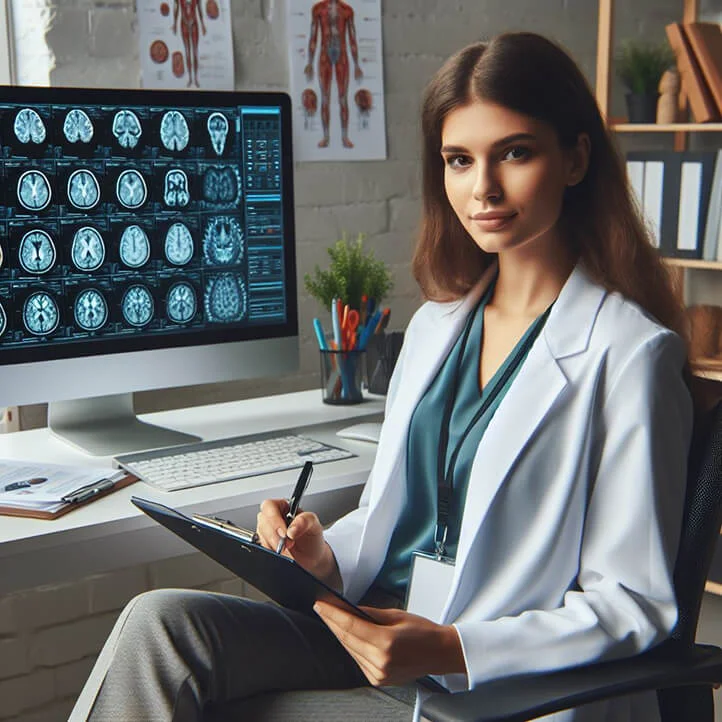
Research Methods in Neuropsychology
Studying the relationship between brain structure and functions and mental processes requires a variety of research methods. Neuropsychology, as an interdisciplinary field, relies on a wide range of methodological approaches to assess both the normal functioning of cognitive processes and manifestations of various impairments.
Key methods in neuropsychology include neuropsychological testing, neuroimaging, studying patients with localized brain damage, as well as experimental and clinical studies. Each of these approaches contributes to expanding knowledge about how the human brain works and the mechanisms underlying cognitive functions and behavior.
Neuropsychological Testing
Neuropsychological testing, using standardized tests, allows for the identification and assessment of the degree of impairment in various cognitive abilities, such as:
- Memory (verbal and non-verbal).
- Attention (selective, divided, sustained).
- Perception (visual, auditory, tactile).
- Speech (speech comprehension, naming, repetition, reading, writing).
- Executive functions (planning, cognitive flexibility, working memory, inhibition).
- Visuospatial skills.
- Psychomotor skills.
These tests help to identify impairments and localize them in specific areas of the brain, aiding in diagnosis and rehabilitation planning.
Neuroimaging
Neuroimaging methods allow for the visualization of brain structure and function in vivo (in living organisms). The most commonly used methods include:
Structural Neuroimaging
- Computed Tomography (CT) – allows visualization of brain structures and detection of pathological changes such as trauma, tumors, hemorrhages, etc.
- Magnetic Resonance Imaging (MRI) – provides more detailed imaging of brain and spinal cord structures with high resolution and contrast between different tissues.
Functional Neuroimaging
- Functional Magnetic Resonance Imaging (fMRI) – visualizes activity in various brain regions during cognitive tasks, based on changes in blood flow.
- Positron Emission Tomography (PET) – used to study metabolic processes in the brain and the activity of neurotransmitter systems using radioactive tracers.
- Electroencephalography (EEG) – records the brain’s electrical activity with high temporal resolution but low spatial resolution.
- Magnetoencephalography (MEG) – measures magnetic fields generated by neuronal electrical activity, offering both high temporal and spatial resolution.
These methods allow for studying brain activity in normal and impaired states, identifying neural networks involved in different cognitive processes, and observing dynamic changes during disease progression or rehabilitation.
Studying Patients with Localized Brain Damage
Research on patients with localized brain damage caused by trauma, stroke, tumors, neurosurgery, or other factors helps reveal the relationship between specific brain regions and cognitive, emotional, or behavioral impairments. This is one of the primary methods in neuropsychology that helps study the principle of anatomical-functional localization of higher mental functions.
Experimental and Clinical Approaches
Both experimental studies on healthy participants and clinical studies on patients with various neurological and psychiatric disorders are used in neuropsychology.
Experimental Studies
Experimental research on healthy participants allows the study of normal cognitive processes and the neural mechanisms associated with them. They often include:
- Neuropsychological tests and cognitive tasks.
- Neuroimaging methods (fMRI, PET, EEG/MEG) during task performance.
- Transcranial Magnetic Stimulation (TMS) to temporarily “turn off” specific brain areas.
- Neuropharmacological interventions to modulate neurotransmitter systems.
Experimental studies help build models of normal brain functioning and identify neural correlates of various mental processes.
Clinical Studies
Clinical studies on patients with neurological and psychiatric disorders allow the investigation of the neurobiological basis of pathological states. These include:
- Neuropsychological testing to assess cognitive impairments.
- Neuroimaging to identify structural and functional anomalies in the brain.
- Longitudinal studies to track the progression of cognitive disorders.
- Evaluation of the effectiveness of pharmacological and non-pharmacological interventions.
Clinical studies are essential for understanding neuropsychological syndromes, mechanisms of disease development, and for developing diagnostic and treatment methods.
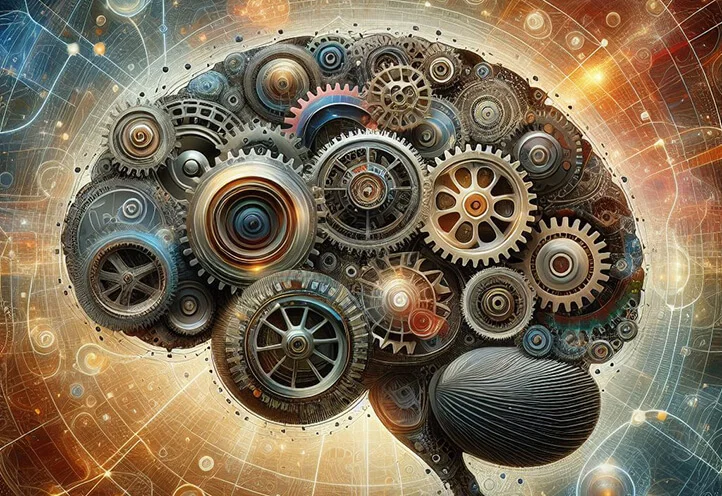
Application of Neuropsychology
The achievements of modern neuropsychology find broad practical application in various areas of society. Understanding the relationship between brain structure and functions and human mental processes opens up new opportunities for the diagnosis, treatment, and rehabilitation of a wide range of disorders, as well as for developing effective approaches in education and legal practice.
One of the key areas of neuropsychology application is clinical practice related to the diagnosis and treatment of neurological and mental disorders. Neuropsychological testing plays an important role in detecting cognitive function impairments, localizing brain lesions, and determining the severity of disorders.
This is critical for the timely diagnosis of conditions such as traumatic brain injuries, strokes, neurodegenerative diseases, brain tumors, autism spectrum disorders, epilepsy, depression, and many others.
Knowledge of the neurobiological mechanisms underlying various disorders helps develop more effective treatments, including pharmacotherapy, non-drug interventions, and monitoring treatment effectiveness through repeated neuropsychological testing.
Additionally, neuropsychology’s achievements are essential for the development of neurorehabilitation methods aimed at restoring impaired cognitive, emotional, and behavioral functions after injuries, strokes, and neurosurgical interventions.
Beyond clinical practice, neuropsychology is applied in education and child development. Understanding the neurobiological foundations of learning processes, the development of cognitive functions, and emotional and social intelligence helps create more effective educational programs and methods for correcting developmental disorders, such as autism spectrum disorders, attention deficit hyperactivity disorder (ADHD), and learning difficulties in reading, writing, and math.
Diagnosis and Treatment of Neurological and Mental Disorders
Diagnosis
Neuropsychological assessment plays an important role in the diagnosis and differential diagnosis of disorders such as:
- Traumatic brain injuries (TBI)
- Strokes
- Neurodegenerative diseases (Alzheimer’s disease, Parkinson’s disease, etc.)
- Brain tumors
- Autism spectrum disorders
- Epilepsy
- Depression, anxiety, and other mental disorders
- Developmental disorders (ADHD, dyslexia, dyscalculia, etc.)
Neuropsychological testing helps detect cognitive impairments, determine their severity, and localize the lesion in the brain.
Treatment and Monitoring
Understanding the neurobiological mechanisms underlying various disorders helps to:
- Develop more effective treatment methods (pharmacotherapy, non-drug interventions)
- Monitor treatment effectiveness through repeated neuropsychological testing
- Predict the course of the disease and outcomes
For example, in Alzheimer’s disease, neuropsychological data are used for early diagnosis, assessing the degree of dementia, and tracking its progression.
Neurorehabilitation
Neuropsychological research contributes significantly to the development of neurorehabilitation methods aimed at restoring cognitive, emotional, and behavioral functions after brain injuries, strokes, neurosurgical interventions, and other impairments. These methods include:
- Cognitive rehabilitation – training and restoring impaired functions (memory, attention, speech, etc.) through specialized exercises and computer programs
- Speech therapy – restoring speech functions in aphasia and other speech disorders
- Physical and occupational therapy – restoring motor functions, daily living skills, and patient independence
- Neurofeedback technologies (NFB) – training self-regulation of brain activity to improve cognitive functions
- Neuromodulation – using transcranial magnetic stimulation (TMS) or electrical stimulation to activate or suppress the activity of certain brain areas
Neurorehabilitation approaches are based on the principles of brain neuroplasticity and aim for maximum recovery of impaired functions and improved quality of life for patients.
Education and Child Development
Neuropsychological knowledge is applied in the field of education and child development. It helps to better understand:
- Learning processes and the acquisition of new skills
- The development of cognitive functions (memory, attention, speech, etc.) at different age stages
- The formation of emotional and social intelligence
- The neurobiological foundations of reading, writing, and math processes
Neuropsychological methods are also used for diagnosing and correcting developmental disorders in children, such as:
- Autism spectrum disorders
- Attention deficit hyperactivity disorder (ADHD)
- Learning difficulties (dyslexia, dyscalculia, dyspraxia)
- Delayed speech development
Understanding the neurobiological mechanisms underlying these disorders allows for the development of more effective methods for correcting and adapting educational programs.
Legal and Forensic Neuropsychology
In legal and forensic practice, neuropsychological data can be used to:
- Assess competence, sanity, and the risk of recidivism in offenders
- Determine the degree of cognitive impairment and the possibility of recovery after brain injuries for compensation purposes
- Assess the reliability of witness and victim testimony
- Conduct expert evaluations of children’s and adolescents’ mental abilities in cases of abuse or sexual crimes
- Perform evaluations in disputed cases concerning wills and property management in the context of cognitive impairments
Neuropsychological expertise can have a significant impact on the outcome of legal proceedings, especially in cases involving brain injuries, neurological, and mental disorders.
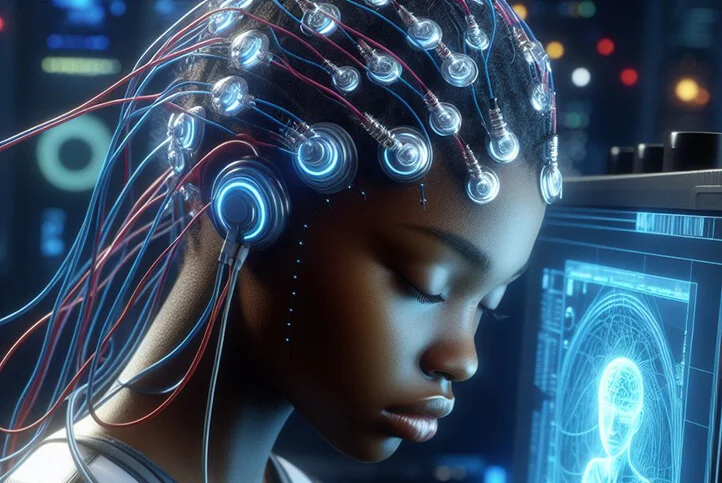
Modern Trends and Prospects in Neuropsychology
Neuropsychology is rapidly evolving, opening new horizons in the study of the connection between the brain and human behavior. Modern trends in this field are characterized by an interdisciplinary approach, the fast development of neuroimaging technologies and computer modeling, as well as increasing interaction with promising areas such as artificial intelligence and the development of brain-computer interfaces.
One of the key trends is the growing integration of neuropsychology with other sciences such as neurobiology, genetics, computer science, and social and humanitarian disciplines. An interdisciplinary approach allows for a more comprehensive understanding of the complex processes underlying human mental activity, studying them at various levels of organization—from genetic and molecular to systemic and behavioral. This opens up new possibilities for identifying genetic risk factors for neuropsychological disorders, understanding the influence of the sociocultural environment on cognitive functions, and more.
Significant progress is being made in the development of neuroimaging technologies, allowing for detailed studies of brain structure and function. Multimodal systems are emerging that combine various methods such as functional MRI, PET, and EEG/MEG, providing unprecedented opportunities for simultaneously tracking metabolic processes, electrical activity, and hemodynamic changes in the brain with high spatial and temporal resolution. Additionally, new promising methods such as optogenetics, 3D neuroimaging, and molecular imaging are being developed, opening up entirely new horizons in brain research.
The close integration of neuropsychology with artificial intelligence (AI) and machine learning is also one of the leading trends. On the one hand, computer modeling of cognitive processes and neural networks based on deep learning technologies can help better understand the principles of biological systems in the human brain. On the other hand, studying the functioning of real neuronal ensembles contributes to the development of more advanced machine learning algorithms and AI. This two-way exchange of knowledge opens new perspectives for both fields.
Interdisciplinary Approach
Neuropsychology is increasingly integrating with fields such as neurobiology, genetics, computer science, artificial intelligence, and the social and humanities sciences. Such a multidisciplinary approach allows for a more comprehensive understanding of the complex processes underlying human mental activity and studying them at different levels of organization: genetic, molecular, cellular, systemic, and behavioral.
For example, integration with genetics and genomics helps identify genetic risk factors for developing neuropsychological disorders and understand their molecular foundations. Collaboration with social sciences opens up opportunities to study the influence of culture, education, and the social environment on the development of cognitive functions.
New Neuroimaging Technologies
The development of neuroimaging methods is advancing towards higher resolution and the combination of multiple modalities in a single system. This provides more detailed information about brain structure and function simultaneously.
For example, multimodal systems that combine fMRI, PET, and EEG/MEG allow for the simultaneous tracking of metabolic processes, electrical activity, and hemodynamic changes in the brain with high spatial and temporal resolution.
Additionally, new neuroimaging methods are being developed, such as:
- Optogenetics – allows the activation or inhibition of specific groups of neurons using light, giving unprecedented control over the activity of neural networks.
- 3D neuroimaging – enables the creation of detailed 3D brain maps and the study of structural features of its anatomy.
- Molecular neuroimaging – uses molecular markers to visualize various biochemical processes in the brain at the molecular level.
These new technologies significantly expand the possibilities for studying the brain and promise to lead to new discoveries in understanding its functioning.
Neuropsychology and Artificial Intelligence
Advances in artificial intelligence (AI) and machine learning open new prospects for neuropsychology. On the one hand, computer modeling of cognitive processes and neural networks can help better understand the mechanisms of human brain functioning. On the other hand, studying the principles of biological neural networks helps develop more advanced machine learning algorithms and artificial intelligence.
For example, deep learning technologies based on artificial neural networks allow for the modeling of complex cognitive processes such as pattern recognition, natural language processing, and decision-making. Analyzing the structure and functioning of successful neural network models can provide new insights into real brain processes.
Additionally, AI technologies can be used to analyze large volumes of neuropsychological data, identify patterns, and build predictive models for diagnosing and forecasting the course of various disorders.
Such close interaction between neuropsychology and artificial intelligence opens new horizons for both fields and may lead to groundbreaking achievements in the future.
Brain-Computer Interfaces
One of the promising areas at the intersection of neuropsychology and information technology is the development of brain-computer interfaces (BCIs). These systems allow for direct reading of brain activity and using it to control external devices or computer programs.
BCIs can be used to assist people with limited mobility, providing them with ways to communicate and control their environment using brain signals. They may also find applications in neurorehabilitation for training and restoring impaired functions.
Moreover, BCIs open new opportunities for studying brain mechanisms, allowing the registration of its activity in real-time while performing various tasks and controlling virtual environments.
As these technologies advance, neuropsychology will gain new tools for research and practical applications in various fields.
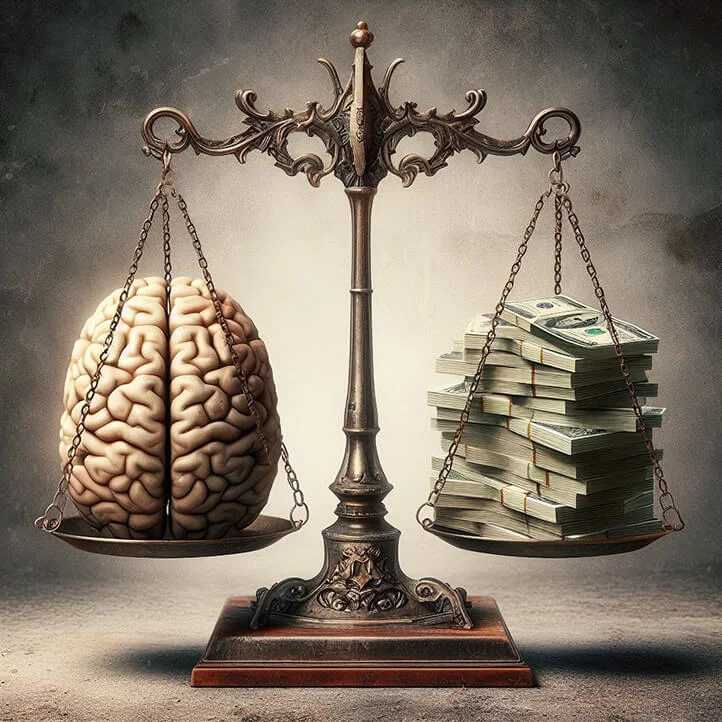
Ethical Aspects and Neuroethics
As neuropsychology advances and new technologies emerge to study and intervene in brain function, important ethical issues arise. These include privacy concerns, data confidentiality, the potential for manipulation of consciousness and behavior, and the possible use of these technologies for military or unethical purposes.
It is crucial to carefully examine the ethical aspects of applying neuropsychological and neuroscientific advancements and develop corresponding regulations, guidelines, and ethical codes to protect human rights and dignity.
These questions have become the focus of a specialized field called neuroethics, which studies the ethical, legal, and social problems associated with the development of neuroscience and technologies that affect the brain and human consciousness.
Neuroethics aims to ensure the responsible and ethical application of advances in neuropsychology and related disciplines. Its main tasks include:
- Developing ethical standards and guidelines for conducting neuroscience research with respect for human rights.
- Analyzing the ethical, legal, and social implications of introducing new neurotechnologies.
- Preventing the unethical use of neurotechnologies for manipulating consciousness, controlling behavior, etc.
- Promoting open dialogue and educating the public on neuroethical issues.
- Formulating policies and legislation to regulate the application of neuroscience advancements.
Neuroethics is becoming an increasingly important field as our knowledge of the brain advances, and technologies capable of influencing mental processes emerge. It integrates achievements in neuropsychology, neurobiology, philosophy, law, sociology, and other disciplines.
Promising areas of neuroethics include studying the ethical aspects of cognitive enhancement, issues of personal identity and consciousness, the moral status of artificial intelligence, and many other questions at the intersection of science and philosophy.
The development of neuroethics as a full-fledged scientific discipline is critically important to ensure that progress in understanding brain function and the introduction of new neurotechnologies is accompanied by careful risk assessment and the establishment of ethical limits to ensure the welfare of individuals and society.
Creating Ethical Frameworks for Neuropsychological Research
As neuropsychology advances, it is essential to establish clear ethical frameworks for conducting research and applying the results. Key principles should include:
- Respect for human dignity – avoiding any form of discrimination or harm to research participants.
- Informed consent – providing all necessary information about the study and obtaining voluntary consent from participants.
- Protection of vulnerable groups – taking special precautions when working with children, people with mental health disorders, or cognitive impairments.
- Data confidentiality – strict protocols for protecting personal information and examination results.
- Justice and equal access – ensuring equal opportunities to participate in research and access its results.
- Scientific integrity – honesty, objectivity, and transparency at all stages of the research process.
Establishing clear ethical guidelines and oversight boards will ensure responsible conduct in neuropsychological research and protect participants’ rights.
Ethical Issues in the Use of Neurotechnologies
In addition to research, significant ethical questions arise regarding the use of neurotechnologies in various areas of life. For example:
- Cognitive enhancement – is it acceptable to use neurotechnologies to improve memory, attention, or other functions in healthy individuals?
- Mind reading and manipulation of consciousness – how can people be protected from unwanted interference with brain function and mental activity?
- Legal aspects – how should neuroimaging data be interpreted in court? Can they be used to determine guilt?
- National security – is it possible to create “neuro-weapons” based on technologies for controlling consciousness or emotions?
- Commercialization – is it ethical for dubious companies to sell services for “brain optimization”?
These and many other issues require thorough analysis and open public discussions to develop balanced solutions that consider scientific data, ethical principles, and societal interests.
Education and Awareness on Neuroethics
Education and awareness among professionals and the general public should play a key role in addressing the ethical problems associated with neuropsychology. The following are necessary:
- Inclusion of neuroethics courses in the training programs for neuropsychologists, neurobiologists, and related specialists.
- Organization of conferences, seminars, and public lectures to discuss ethical issues in neuroscience.
- Publication of popular science literature and the creation of online educational resources to disseminate knowledge widely.
- Involvement of philosophers, ethicists, lawyers, policymakers, and public figures in open dialogue on neuroethical issues.
- Raising awareness about potential risks and the inadmissibility of using certain neurotechnologies for unethical purposes.
Only with broad public awareness and the involvement of all stakeholders can balanced ethical standards be developed to guide the advancement of neuropsychology and related fields for the benefit of humanity.
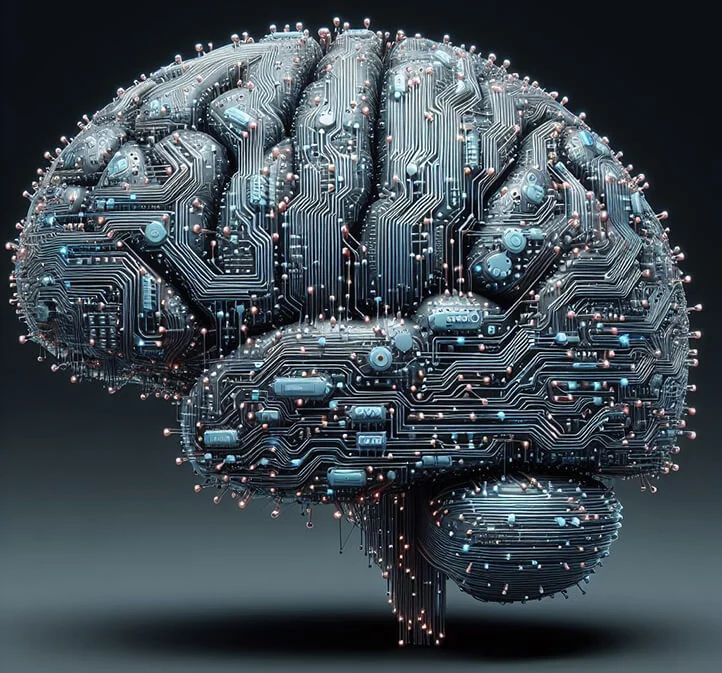
Conclusion
Neuropsychology is a rapidly developing interdisciplinary field of research that studies the relationship between the structure and functions of the brain and human mental processes, behavior, and emotions. Neuropsychological research contributes significantly to our understanding of both normal brain function and disorders caused by various pathologies.
Advances in neuropsychology have wide practical applications in diagnosing and treating neurological and mental disorders, neurorehabilitation, education, law, and many other areas. The rapid development of neuroimaging techniques, computer modeling, and interdisciplinary collaboration with other sciences opens new horizons for studying the principles of brain function.
At the same time, the rapid progress in neuroscience and neurotechnologies raises many ethical questions regarding the protection of human rights, data confidentiality, the prevention of consciousness manipulation, and the unethical use of new technologies. To address these issues, it is essential to create clear ethical frameworks, engage the public in discussions, and ensure proper education and awareness on neuroethical issues.
Continued fundamental and applied research in neuropsychology, with a responsible and ethical approach, will open new opportunities for improving people’s quality of life, expanding the boundaries of human knowledge, and advancing science and technology.
Recommended Reading
- Essentials of Neuropsychology: Integrating Eastern and Western Perspectives by K. Jayasankara Reddy. This book is divided into three parts, each dedicated to specific aspects of neuropsychology. The first part introduces readers to the fundamental principles of neuropsychology, including available assessment methods, brain anatomy, and its connection to human psychology. It presents an in-depth look at neuropsychological and electrophysiological methods and their clinical applications. The second part focuses on the brain and cognition, as well as the complex mechanisms underlying cognitive behavior. The third part discusses disorders with a direct connection between brain function and behavior, offering valuable information on their diagnosis and treatment. This is an essential resource for both students studying clinical neuropsychology and professionals seeking to expand their knowledge and stay up to date with the latest developments.
- Cognitive Neuroscience & Neuropsychology: The Comprehensive Guide by Viruti Satyan Shivan. Written in an engaging and accessible style, this comprehensive guide reveals the fundamental principles of cognitive neurobiology and neuropsychology, sharing insights from recent research and their significance in everyday life. Whether you’re looking to expand your academic knowledge or are simply interested in how the brain shapes perception, this book is for you.
- Neuropsychology: From Theory to Practice by David Andrewes. This book offers an overview of current theories and methods in neuropsychology, as well as their practical application in clinical and research work.
- Introduction to Neuropsychology by J. Graham Beaumont. A comprehensive yet accessible overview of clinical and experimental neuropsychology. It covers the impact of traumatic brain injury on mental functions and describes methods for studying brain performance in a psychological laboratory.
